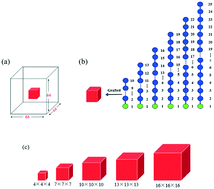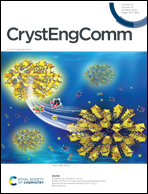Correlation between molecular weight and confined crystallization behavior of polymers grafted onto a zero-dimensional filler†
Abstract
In this work, polymer chains of different molecular weights are grafted onto a zero-dimensional filler. The effects of molecular weight and filler size on the confined crystallization of grafted polymer systems are systematically studied using Monte Carlo simulations. It is found that when the molecular weight is higher, the restriction effect is weaker. The crystallization ability and the ultimate crystallinity are enhanced. The simulation results also found that as the chain length increases, the average segment density of the interface region increases and the mobility of the molecular chain is enhanced. This leads to the increase of supercooling and the decrease of critical nucleation free energy barrier. During isothermal crystallization kinetics processes, the nucleation mode is homogeneous nucleation. The effects of the filler size of grafted polymer systems were also investigated. When the number of segments was fixed, the crystallization ability can be improved by reducing the filler size. However, when the distribution of grafting points is the same, the crystallization ability becomes stronger with the increase of filler size. The simulations reproduce the experimental results and vividly present the evolution process of microstructures, which cannot be observed experimentally at present. These findings are helpful in understanding the microscopic mechanism of crystallization behavior of polymer composites and the corresponding reinforcement mechanism.



 Please wait while we load your content...
Please wait while we load your content...